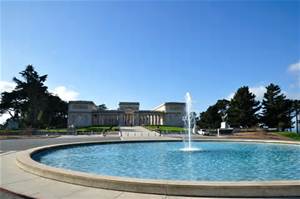Apr 6 2024 - Aug 18 2024
Fine Arts Museums of San Francisco - Legion Of Honor
San Francisco, CA
In 1868 Japan’s shogun was overthrown, marking the end of feudal military rule and ushering in the Meiji era (1868–1912), a period of modernization and exchange with other nations.
As Japan’s society shifted, so too did its print culture. The delicately colored ukiyo-e (floating world woodblock prints) of actors, courtesans, and scenic views that had flourished for over a century were replaced with brightly colored images of Western architecture, technology (trains, steam-powered ships, telegraph lines), Victorian fashions and customs, and modern military warfare.
Featuring permanent collection works from the Achenbach Foundation for Graphic Arts that haven’t been displayed for a more than a decade, this two-part exhibition (the floating world and the modern world) highlights this stylistic transition and the work of one artist, Tsukioka Yoshitoshi, who successfully spanned them both. His distinctive, sometimes eccentric, images serve as a link between the two eras.
Credit: Overview from museum website
Exhibition Venues & Dates
Apr 6 2024 - Aug 18 2024
Fine Arts Museums of San Francisco - Legion Of Honor
San Francisco, CA
